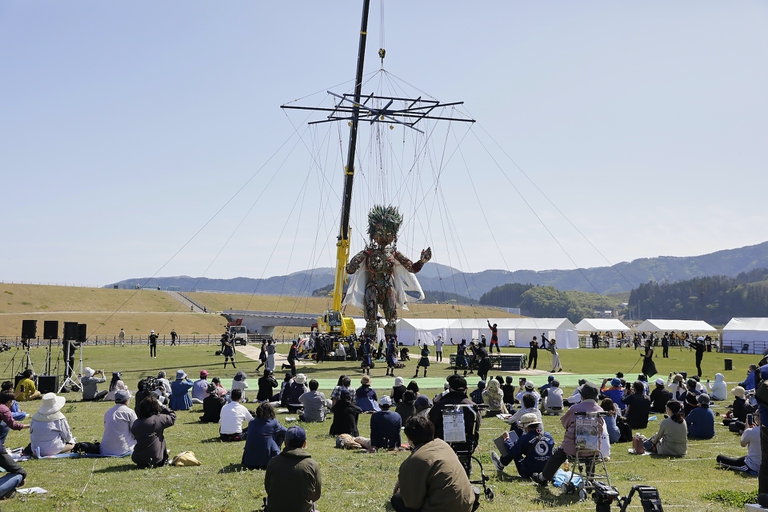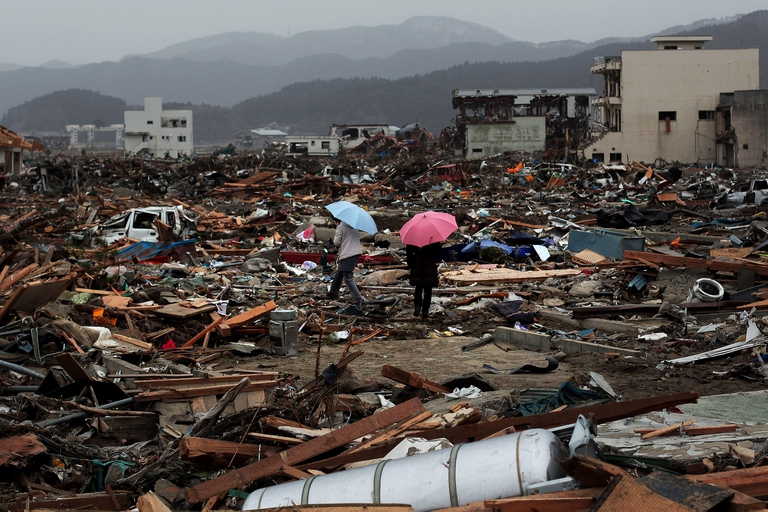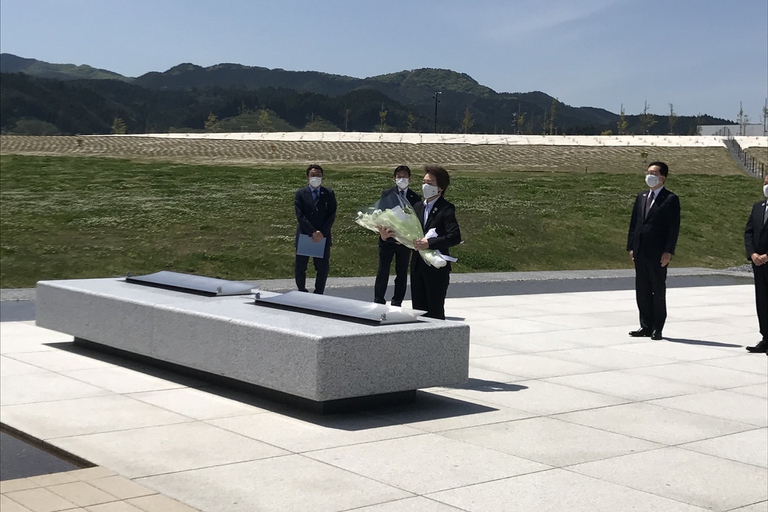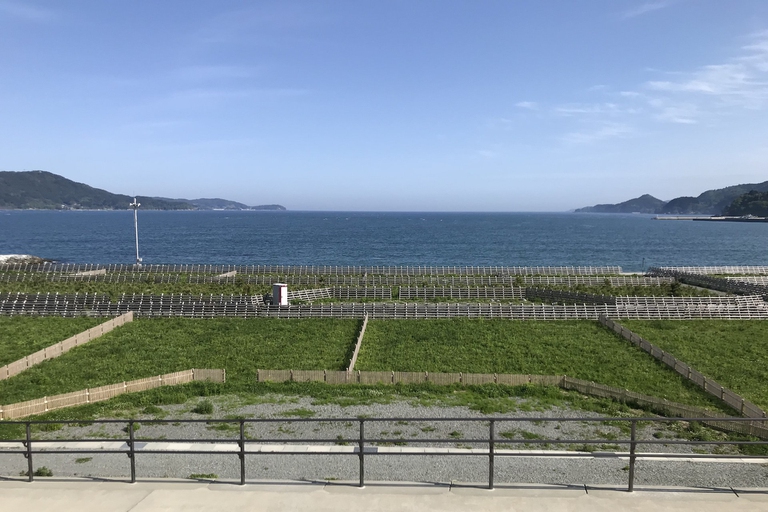
As per tradition after 12 years India held Mahakumbh, the world’s largest spiritual congregation that has been attracting pilgrims from across the globe.
Tokyo hosts the Olympics but Tohoku, the region hit by the 2011 disaster, also takes centre stage. Its symbol is a miracle pine.
In the middle of an expanse of fields and sky, where the silence is broken only by the sound of the wind, a single pine tree rises forty metres into the air. It’s known as the “miracle pine“. It’s the only one, out of 70,000 specimens, to have survived the tsunami that hit the coast of Tohoku in northeastern Japan, on 11th March 2011, causing some 20,000 deaths and flooding 500 square kilometres of coastline. The tree then died as a result of prolonged contact with salt water but was replanted as a symbol of remembrance of the tragedy. Miracle pine also symbolises the rebirth of the town where it is rooted, Rikuzentakata, where 2,000 people lost their lives. The tree can be visited within the Takata Matsubara Reconstruction Memorial Park, named after the pine forest that the sea swept away on that tragic day ten years ago.
The park, home to the Iwate Tsunami Memorial, played host to the inauguration of “Rediscover Tohoku – Mocco’s Journey from Tohoku to Tokyo“, an initiative by the Tokyo 2020 Olympic Games Organising Committee to establish a direct link with the affected areas. It involves a tour by a giant puppet, called Mocco, through the three prefectures that were worst hit by the disaster: Iwate, Miyagi, and Fukushima. Ten metres tall, Mocco was created by expert illustrators and puppet-makers who drew inspiration from the artistic work created by local students. Mocco’s mission was to bring messages of hope from communities in Tohoku all the way to Tokyo, in the heart of this year’s summer games.
The reconstruction isn’t complete yet. All the buildings have been rebuilt, but the rebirth of the people is still underway.
One of the pillars of Tokyo’s candidacy as host city of the 32nd Olympiad, presented in 2011, was the idea of transforming the Olympics and Paralympics into an opportunity to boost recovery following the disaster. Having been selected as the best bid, the Tokyo 2020 Olympics were nicknamed the “Reconstruction” Games. Among its official goals, the event aims to bring hope to young people in the areas hit by the disaster through sport, promoting Tohoku’s nature, traditions, and culture, and expressing Japan’s gratitude for the support the country received from the international community in its time of need.
Tohoku itself, in the Matsushima military airfield in Miyagi prefecture, was where the Olympic torch began its route through Japan in March 2020. From there, the flame continued through Iwate and Fukushima, where it was exhibited for locals to see. One year later, the Olympic torch relay started from the J-village training centre in Fukushima. Meanwhile, during the Tokyo 2020 NIPPON Festival in May this year, the Mocco path was inaugurated, in keeping with the event’s theme of bringing together Japan’s regional cultures.
The ceremony to reveal the giant puppet and inaugurate its itinerary was held on 15th May. Seiko Hashimoto, president of the Tokyo 2020 organising committee, gave the inaugural address. “The people who are still trying to build themselves up can give hope to those like them who are suffering due to natural disasters,” Hashimoto told the audience, mostly made up of people from Iwate who had come to enjoy the spectacle on a lovely sunny day.
The ceremony was enlivened by performances from artist groups, from singing to calligraphy demonstrations. The highlight was the staging of a play about the legend of Mocco, with the giant puppet in the midst of the action, moved by the puppetmasters using dozens of cables.
A particularly touching moment came when a survivor of the tsunami, Yonegawa, told his story. “After the earthquake, when I realised a tsunami was coming, I took refuge on the roof, and then atop the chimney. The water missed me by some twenty centimetres. I had to stay there all night, and the next day they came to save me in a helicopter”. Thus, with lots of emotion and lots of colours, Mocco’s journey was inaugurated. The puppet, after Rikuzentakata, made stops in Miyagi and Fukushima and reached Tokyo in mid-July, a few days before the beginning of the Olympics.
“Protecting lives, and living together with the ocean and earth, to never again experience the sadness of the Great East Japan Earthquake and Tsunami”. This is the goal of the tsunami memorial, which aims to spread awareness and preserve the memory of the disaster. This message is not just limited to Tohoku, nor to Japan, but one that is shared across all humanity.
To face the challenges of the future, such as the existential threat of climate change, it is vital to know our past, not only as individuals but as communities. Following decades of work, firms like Toyota, the historic Japanese car manufacturer that is now a global mobility company, have set concrete goals for the future, like the Environmental Challenge 2050, which aims to cut emissions to zero across the entire life cycle of its products by mid-century. “A company in harmony with nature,” to use Toyota’s words, this is the guiding principle behind this commitment, also reflected in Rikuzentakata’s decision to plant a new pine forest on the park’s coastline as a natural barrier against tsunamis.
Furthermore, environmental protection is inextricably linked to its social dimensions. Thus, through its Beyond Zero vision, Toyota – official mobility partner of the International Olympic Committee and the International Paralympic Committee – wants to contribute to the creation of a prosperous and inclusive society. This latter theme is crucial for Japan as well, because as well as being the Reconstruction Olympiad, Tokyo 2020 also aim to be inclusive Games.
As a leader in the field of mobility, Toyota wants to implement this vision by working so that everyone has the maximum freedom to move in a sustainable way. This goal is sought through initiatives such as the Green Month campaign, inaugurated by Toyota Group on World Environment Day, on 5th June. The global campaign saw all its employees directly involved for the entire month of June, including those of its four Italy-based companies who participated in a waste collection and cleanup operation in Rome’s Aqueduct Park together with the organisation Retake Roma. Thousands of kilometres way, Tokyo 2020 too is trying to implement this vision by returning something lasting to the people who lost so much, so that they too can feel part of a more open and sustainable society where they can live with their head held high. Just like the miracle pine.
Siamo anche su WhatsApp. Segui il canale ufficiale LifeGate per restare aggiornata, aggiornato sulle ultime notizie e sulle nostre attività.
![]()
Quest'opera è distribuita con Licenza Creative Commons Attribuzione - Non commerciale - Non opere derivate 4.0 Internazionale.
As per tradition after 12 years India held Mahakumbh, the world’s largest spiritual congregation that has been attracting pilgrims from across the globe.
Workers in tea gardens of West Bengal, India, that produces Ctc tea for domestic consumption complain that they have been devoid of basic facilities while political parties make hollow promises during every elections which are never fulfilled.
India is in the middle of the elections, but sadly none of the politicians have uttered a word on man-animal conflict that has been devouring several lives every year.
Manipur, a state in north-east India, is still reeling under the tremors of violence that broke out last year devouring lives and paralyzing the economy.
The government of Tanzania is currently planning to evict more than 80.000 indigenous Maasai people from their ancenstral land
A new UNU-INWEH report on the global bottled water industry reveals the massive scale of this market and the lack of strict quality controls.
Isatou Ceesay founded a social enterprise that is helping to fight plastic pollution and empowering women and young people to gain economic independence.
In 2020, Mihela Hladin made a radical decision that many, in recent times, have probably considered. This is her story, with photos by Matt Audiffret.
The Brazilian government has started evicting illegal gold miners, responsible for the health emergency that has hit the Yanomami people.











